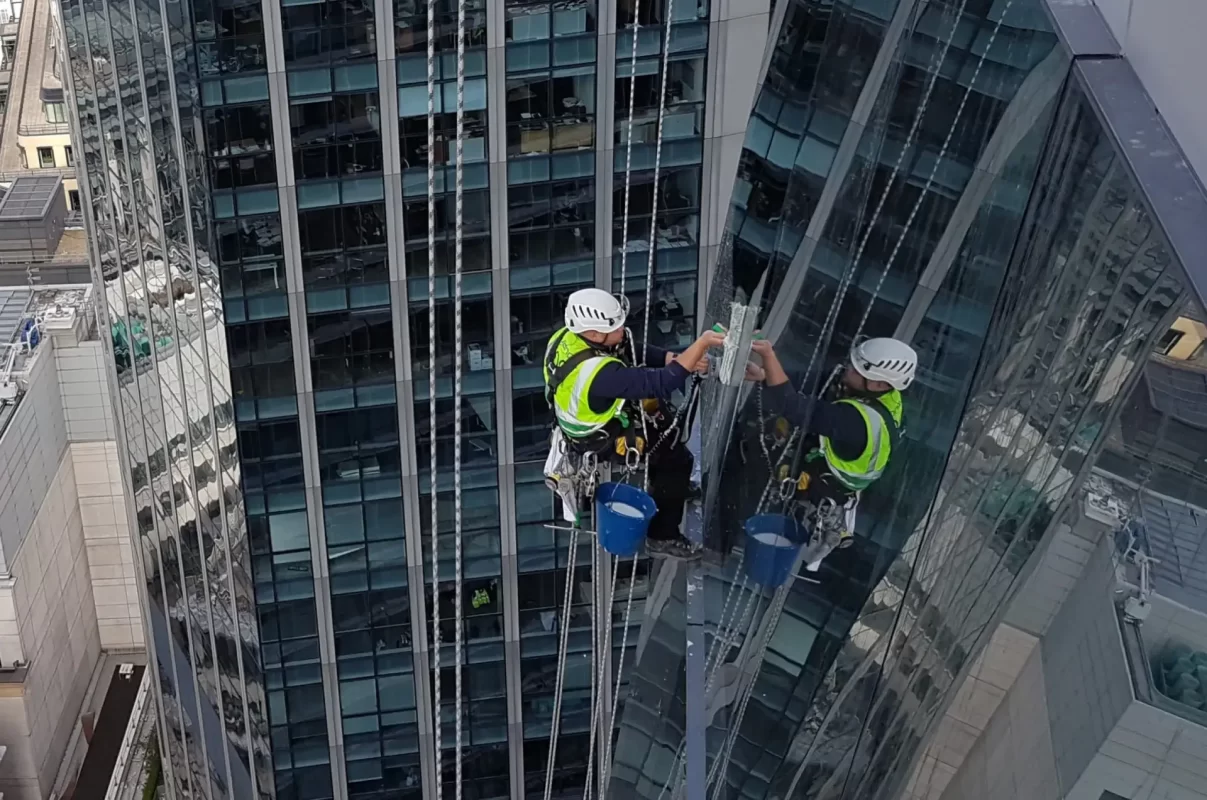Rope access is a popular method of accessing difficult-to-reach areas, but is it a risky business? Discover the ins and outs of rope access safety in this handy guide.
Whether you want to birdproof a building, detect possible leaks or restore cladding, rope access is a smart way to access an exterior. This tried and tested process enables you to minimise costs, reduce disruption and save time.
However, like any job which demands you to work from height, there are obvious associated risks to consider.
With this in mind, we’ve created a little guide to help you decide whether rope access is safe and what the protocols are to keep accidents to a minimum.
Is Rope Access Safe?
As precarious as it appears, fulfilling rope access services is the safest way of working at height. Rope access shows a very low injury or accident occurrence on record compared to scaffolding and other powered access systems/methods.
Its fantastic reputation as a top method of working at height comes down to the rope access safety regulations in place.
To utilise rope access, you need professional training and qualifications verified by official abseiling governing bodies that maintain strict safety guidelines. In other words, not everyone can just abseil off a building (thankfully).
The International Rope Access Trade Association (IRATA) regulates the training and qualifications for all rope access operatives.
What Are the Rope Access Regulations?
IRATA has developed three different schemes that regulate and controls all safety issues within the IRATA International Code Of Practice For Industrial Rope Access:
International Code of Practice
All technicians in the rope access industry must be assessed regularly with the IRATA assessment and certification scheme guidelines.
Membership Audit
Operatives must be audited by IRATA, confirming that they’re working to the required guidelines. As a regulation, this has led to minimal accident rates.
Training & Certification
Individuals are assessed by IRATA guidelines across three levels of training. If successful, they can claim official registration with the IRATA and rope access technician certification.
The IRATA also provides a detailed guide to the health & safety of abseiling known as ICOP. The ICOP contains 275 pages of guidance for abseilers and abseiling firms.
At the start of the ICOP, you will find a quote from the Chief Inspector at HSE.
“I am pleased to continue HSE’s support of IRATA’s guidance in this area. This voluntary code of practice sets out good practice for individuals and organisations using rope access equipment and will help to ensure that health and safety risks in this area are minimised or avoided.”
Philip White – Chief Inspector at HSE
Image source: Irata.org
Why Choose Rope Access for Your Next Maintenance Project?
For 25 years, advanced industrial rope access has proved to be one of the biggest challenges for businesses trying to carry out difficult jobs in hard-to-reach places. Yet, rope access is desired for numerous building maintenance enquiries due to its overall benefits compared to other access methods.
Beyond its unrivalled safety advantages, rope access also contains multiple other benefits, including reducing disruptions and costs.
With minimal disruption to the building, surrounding residents and the public, rope access enables you to reach areas that appear impossible for other access methods.
Is Rope Access Work Scary?
Undoubtedly, becoming a rope access technician requires working from dangerous heights. So, if you’re afraid of heights, we’d highly suggest considering a different career path.
However, even with the safety guarantee, rope access never fails to deliver a thrill for those adrenaline seekers.
Rope access operatives are expected to perform various restoration and maintenance services from all heights.
Despite how scary or stimulating rope access may seem, due to the IRATA regulations, it remains the safest access method for working at height.
So, as frightening as some rope access projects may appear to the average acrophobe, rope access specialists are used to working at a height as part of their daily routine.
Speak to Specialists in Rope Access Safety
If you have a maintenance job which could require rope access, always call in the experts. At Abseiling.co, we maintain our commitment to safety by ensuring:
- All our operatives are fully trained to IRATA standards every 3 years and hold IPAF and CSCS cards, High or Medium Risk Confined Space certification and UKAS/UKATA Asbestos qualifications.
- All our site supervisors hold IRATA Level 3, First Aid and SSSTS certification as a minimum requirement.
- All our projects are meticulously planned and managed in full accordance with IRATA ICOP’14, BS 7985:2013, BS ISO 22846 1&2, WAHR ’05, HSWA ’74, and all other relevant guidance, regulation, and statute.
Utilising the IRATA-regulated training and qualifications ensures our technicians always meet the highest safety standards, allowing our rope access services across London to remain as safe as possible.
Our rope access technicians have completed thorough training and are IRATA certified for complete peace of mind.
If you’re interested in any of our specialist rope access services, get in touch today to receive a free quote.
Frequently Asked Questions Concerning Rope Access Inspection
If you have any more queries concerning the safety of rope access services, here are a few frequently asked questions and answers:
When Should a Rope Access Harness Be Load Tested?
According to IRATA regulations, load testing should be applied to verify if an item of equipment shows permanent deformation under that load at that particular time.
To check the safe working load limit, divide the minimum breaking strain (MBS) by an established safety factor. For example, if your safety factor was ten and your load was 250 kg, your safe working load would be 25kg.
Is Rope Access Safer Than Scaffolding?
Yes. Rope access is historically less dangerous than scaffolding when you check health and safety and accident reports. Scaffolding produces far more accidents and injuries compared to rope access, remaining the industry’s safest access method.
What Equipment is Used for Rope Access?
Rope access requires establishing protective rigging and a safe system of work through either permanent or portable anchorage. After establishing anchor points, other rope access equipment includes ropes, helmets, harnesses, carabiners, ascenders, descenders and lanyards.



